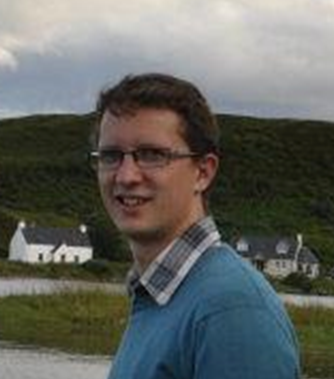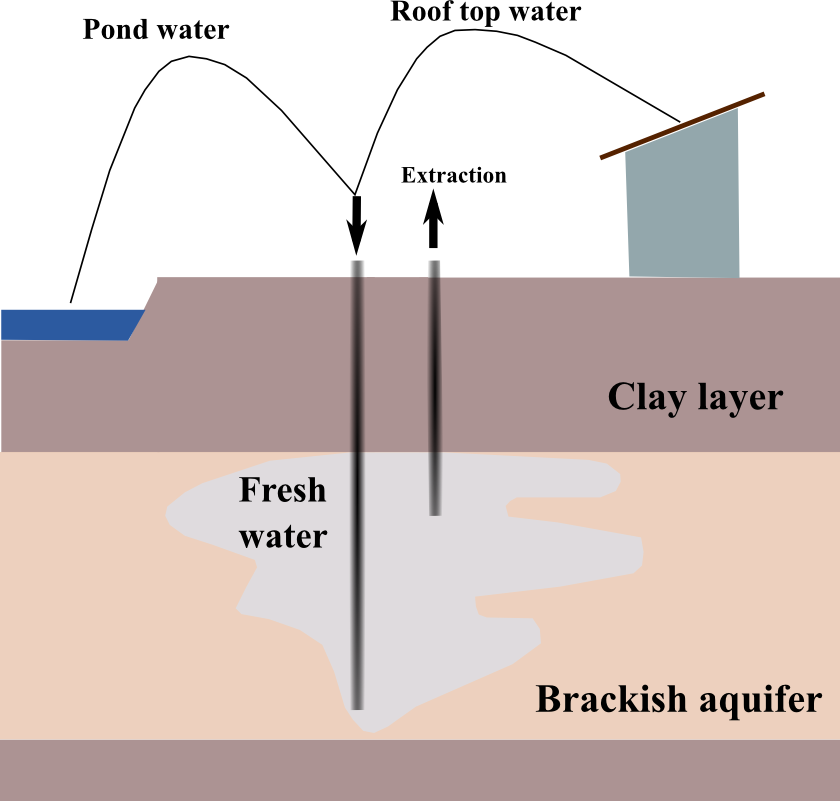 Donald John MacAllister has a BSc in Geophysics from the University of Edinburgh and an MSc in Water Management from Cranfield University. He has spent three years working as a hydrologist and water engineer, both in the UK and in the international development sector. He is currently pursuing a PhD at Imperial College London researching the use of a naturally occurring geoelectric phenomenon to monitor saline intrusion into freshwater aquifers. Donald has done extensive practical work on groundwater on the Indian sub-continent, and here he discusses how we can improve water security in coastal Bangladesh. This blog post draws on a recent presentation by Dr. Kazi Matin Ahmed from the University of Dhaka in Bangladesh. Dr. Ahmed shared some of his recent work with staff and students in the Civil Engineering Department at Imperial College London.
Donald John MacAllister has a BSc in Geophysics from the University of Edinburgh and an MSc in Water Management from Cranfield University. He has spent three years working as a hydrologist and water engineer, both in the UK and in the international development sector. He is currently pursuing a PhD at Imperial College London researching the use of a naturally occurring geoelectric phenomenon to monitor saline intrusion into freshwater aquifers. Donald has done extensive practical work on groundwater on the Indian sub-continent, and here he discusses how we can improve water security in coastal Bangladesh. This blog post draws on a recent presentation by Dr. Kazi Matin Ahmed from the University of Dhaka in Bangladesh. Dr. Ahmed shared some of his recent work with staff and students in the Civil Engineering Department at Imperial College London.
Managed Aquifer Recharge (MAR) is increasingly used around the world for improvement of water storage. MAR consists of adding water, possibly recycled water, to an aquifer under controlled conditions for withdrawal at a later stage. Recent research suggests it may also be a useful tool for improving water access in coastal Bangladesh.
Water supplies in coastal areas of Bangladesh often suffer from salinity problems caused by coastal flooding and seawater intrusion. The problem is compounded by the highly seasonal nature of rainfall which predominantly falls in three to four months during the monsoon from June to November. Throughout the rest of the year these areas suffer from a lack of potable water.
Traditionally, pond water has been the main water source for coastal communities in Bangladesh. These ponds store rainwater that has fallen during the monsoon. However they are highly vulnerable to contamination, both from runoff and from salinity problems due to storm surges and sea level rise. The ponds undergo high rates of evaporation during the dry season. Shallow aquifers tend to be brackish due to seawater intrusion and little groundwater development takes place. There are very few handpumps in the area. As a result tankers are commonly used to bring freshwater into the area during the dry season.
The work carried out by Dr. Ahmed and his team looked to address this problem by applying Managed Aquifer Recharge. The recharged water was intended to create a freshwater buffer in shallow aquifers. The team hoped to provide the freshwater buffer by artificially recharging the aquifers during the rainy season using water from the ponds, and in some places from rooftop rainwater harvesting. The freshwater could then be abstracted during the dry season to provide a more reliable and protected water source for domestic use. Twenty sites were then selected based on the water available from ponds, the relative roof area available for rainwater harvesting and the characteristics of the aquifer. The main hydrogeological requirements were a thin clay layer (less than 15m) and a relatively thick aquifer (about 20m). Socio-economic factors were also considered. These included the capacity of local NGO’s to run and manage the system, the interest and support of the local public health engineering department (PHED) and crucially the willingness of the community to participate in each stage of the process – community support and participation is critical to the success of any activity in development, and should always be considered throughout the project cycle.

Conceptual model of the managed aquifer recharge system created in Bangladesh. Adapted from an image in the Acacia Water Report
Once the community were on board and the sites were selected the project commenced withthe drilling of one large diameter well and two monitoring wells. The large diameter wells were filled with gravel and used to recharge the aquifer. The flow through the infiltration well is metered to measure the total recharge provided to the aquifer. When rooftop rainwater harvesting was used as the primary source for recharge, the system was effectively gravity driven. In the case of pond water supply the water was pumped from the pond into a sand filter. The sand filter reduced turbidity which is a big problem in these types of water sources. The pond water was then driven by gravity flow through the infiltration well. There are plans to use subsurface sand filters to reduce the pumping costs – potentially making the whole systems gravity driven and hence more financially viable in the long term.
The monitoring wells were primarily used to monitor electrical conductivity of the system to determine the change in salinity in the aquifer. The team set up an SMS based monitoring system allowing the monitoring teams to send the data via mobile phone to the team based at Dhaka University. It was found that the system reduced electrical conductivity at all sites. The maximum reduction in electrical conductivity was found to be about 85%, where the conductivity was reduced from 5930 uS/cm to 838 uS/cm, considering the former is classified as brackish water and the latter as freshwater this is a hugely encouraging result.

The system as it looks on the surface. Left – the recharge well and monitoring wells surrounding the handpump used by the community for abstraction. Middle – the recharge well. Right – Construction of the system. Source Acacia Water Report.
Dr. Ahmed emphasised the need for ensuring all the stakeholders were on board from the outset, and ensuring that the community operators are properly trained, as the team observed differences in successes levels between the communities who were more involved and those that were less involved. It also found that where rooftop rainwater harvesting was the only source of recharge the quantity of water supplied to the aquifer was not enough to sufficiently reduce the conductivity. In addition the recharge rate needs to be consistent otherwise the conductivity in the aquifer can recover, more infiltration means more freshwater storage and decreased salinity providing a more resilient community water supply.
Clearly this is early days for Dr. Ahmed and his team, but the initial results suggest that the technique could help improve water security in coastal Bangladesh. Further monitoring and assessments are required before this can be rolled out to further areas of Bangladesh, however this project is hugely exciting because it illustrates very clearly the benefit geoscientists, and in this case hydrogeologists, can bring to the water and sanitation sector. It is an excellent example of the types of innovative technologies that are becoming routine in more developed countries being used to solve water supply problems in the development sector. It is also a great example of geoscience research being used to solve real world development problems.
For more information on the project please see this report by Acacia Water, a Dutch consultant involved in the project.
For more information on managed aquifer recharge please see DFID’s report and this CSIRO information sheet.
